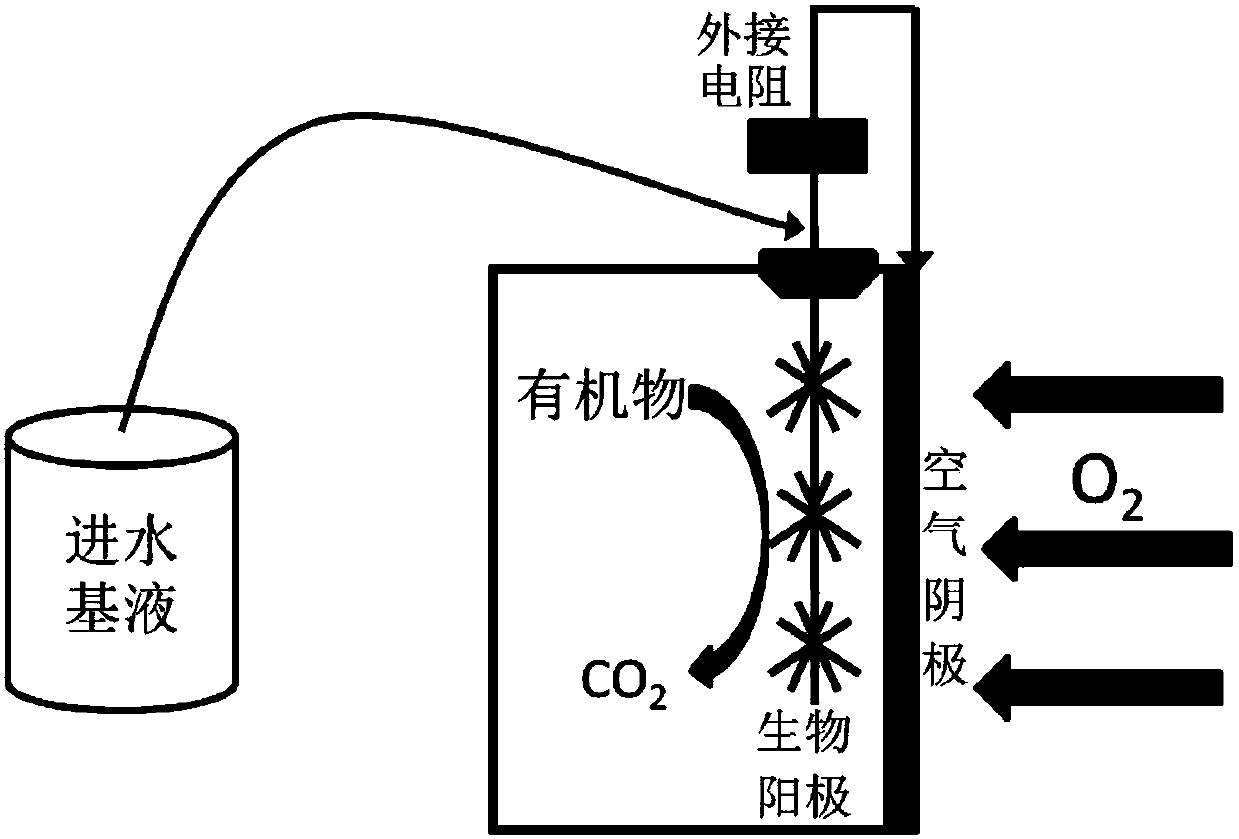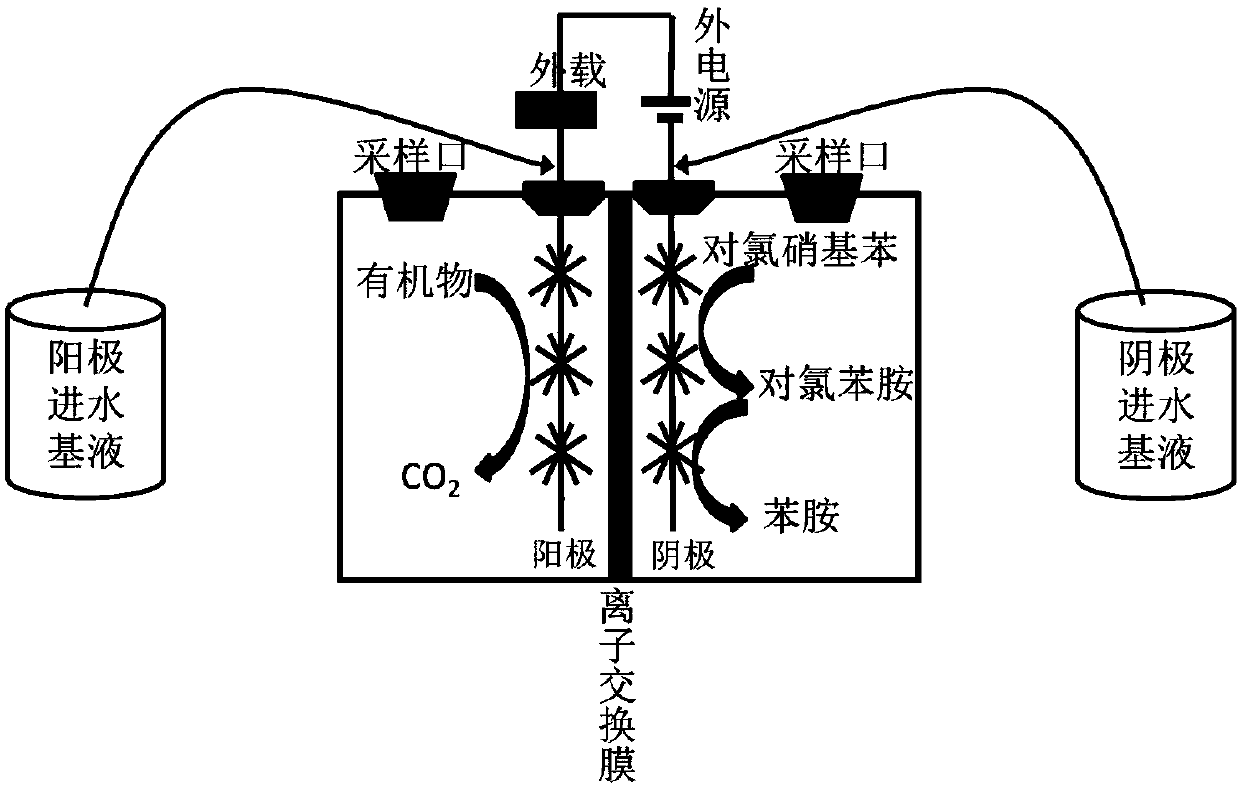Method for high-efficiency degradation of p-chloronitrobenzene through microbial electrocatalysis
A technology of p-chloronitrobenzene and microbial electricity, applied in chemical instruments and methods, biological treatment devices, biological water/sewage treatment, etc., can solve the problems of high treatment costs, slow degradation rate, and large equipment investment
- Summary
- Abstract
- Description
- Claims
- Application Information
AI Technical Summary
Problems solved by technology
Method used
Image
Examples
Embodiment Construction
[0027] The present invention will be further described below in conjunction with the accompanying drawings.
[0028] Such as Figure 1 to Figure 4 As shown, a method for efficiently degrading p-chloronitrobenzene by microbial electrocatalysis of the present invention adopts a double-chamber microbial electrocatalytic system with electrodes arranged vertically and vertically, through directional domestication and enrichment of a certain amount of efficiently degradable The specific functional bacteria of p-chloronitrobenzene, control the appropriate concentration ratio range of glucose and p-chloronitrobenzene, select and determine a reasonable external working voltage, and realize the efficient degradation of p-chloronitrobenzene. The specific process is as follows:
[0029] (1) Longitudinal domestication of electrochemically active microorganisms in a single chamber: the bioanode is longitudinally distributed in the single chamber, the air cathode is longitudinally distribut...
PUM
 Login to View More
Login to View More Abstract
Description
Claims
Application Information
 Login to View More
Login to View More - R&D
- Intellectual Property
- Life Sciences
- Materials
- Tech Scout
- Unparalleled Data Quality
- Higher Quality Content
- 60% Fewer Hallucinations
Browse by: Latest US Patents, China's latest patents, Technical Efficacy Thesaurus, Application Domain, Technology Topic, Popular Technical Reports.
© 2025 PatSnap. All rights reserved.Legal|Privacy policy|Modern Slavery Act Transparency Statement|Sitemap|About US| Contact US: help@patsnap.com



